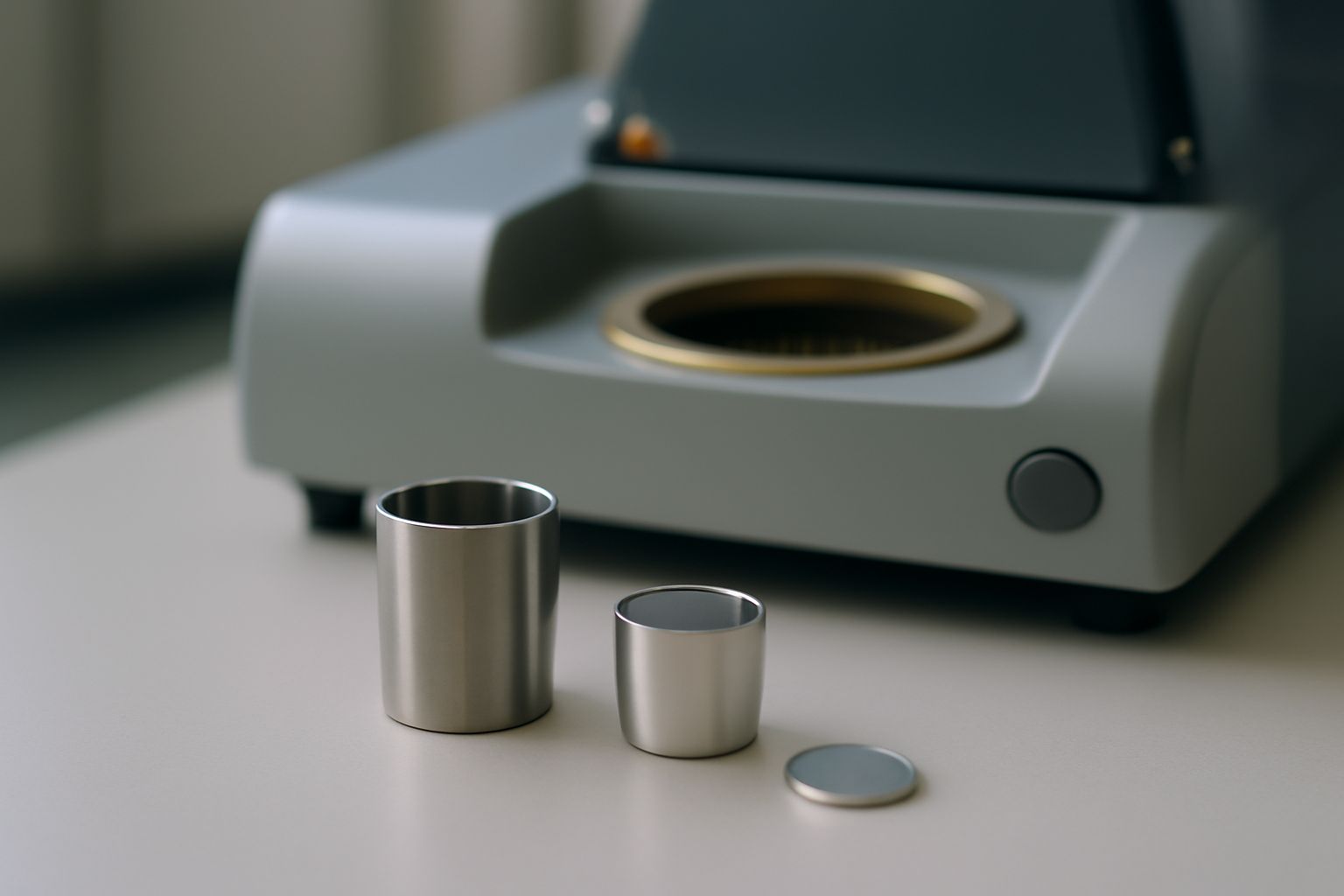Your cart is empty.
shop now
Your cart is empty.
shop now
Choosing the wrong DTA crucible leads to bad results and wasted samples. Labs depend on exact technical standards to avoid these errors and get trusted outcomes.
To achieve accurate DTA results, select crucibles based on material, temperature range, dimension precision, and purity. These parameters support compatibility with your equipment and precise measurement in each lab test.

I have learned from experience that only precise technical choices make lab work smooth. Many testing issues disappear when you match a DTA crucible’s tech specs to your instrument and study needs. Getting these parameters right builds trust in every result and gives new confidence to research teams everywhere.
A wrong material choice means chemical reactions, sample loss, or equipment error. Using the right metals solves most of these issues quickly.
DTA crucibles are made from platinum, high-purity aluminum, and sometimes ceramics. Platinum offers unmatched thermal stability and low chemical reactivity, while aluminum provides good conductivity for most lab uses.
| Material | Main Features | Typical Applications | Reference |
|---|---|---|---|
| Platinum | Very high melting point, low reaction with samples, long service life | High-temp, sensitive tests | platinum |
| High-Purity Aluminum | Good thermal conductivity, easy to form, lower cost | Routine analysis, polymers, many metals | aluminum |
| Ceramics | Heat resistant, inert, often used for special test cases | Oxidizing environments, unique sample types | ceramic |
When I switched to platinum crucibles for high-temperature DTA, the stability and lack of side reactions made a big impact on our results.
Every material and design sets a temperature limit. Using a crucible outside this range causes melting, distortion, or data loss.
DTA crucibles cover a temperature range from room temperature to 1600°C. Platinum supports the upper end, while aluminum is safe up to around 600°C for most test routines.
| Material | Safe Temperature Range | Best Use Cases | Reference |
|---|---|---|---|
| Platinum | Ambient–1600°C | High-temp phase transitions, metal alloys | melting point |
| Aluminum | Ambient–600°C | Low/medium-temp tests, polymers, organics | aluminium |
| Ceramics | Ambient–1400°C | Oxidative, inert, or corrosive samples | ceramic |
Once I used an aluminum pan above its limit and saw the sample mass drop sharply. I always check temp ratings first now to avoid repeating that mistake.
Even a small mismatch in pan size can throw off measurements and reduce system reliability. Tighter tolerances yield much better results.
The best DTA crucibles have dimensional tolerances as tight as ±0.01 mm. This high precision ensures repeatable fitting in analyzers and stops leaks or poor heat transfer during testing.
| Parameter | Ideal Specification | Why It Matters | Reference |
|---|---|---|---|
| Diameter | ±0.01 mm | Good seal with sample holder, prevents material loss | dimensional tolerance |
| Wall Thickness | Uniform, within micrometers | Consistent heat transfer, prevents hotspots | wall thickness |
| Shape Consistency | Exact matching to equipment model | Better repeatability, easy loading/unloading | sample holder |
I once received a shipment of pans with uneven walls. Our test results went wild. Only when we returned to strict tolerances did the analyzer run smoothly again.
Impurities can trigger unwanted reactions, signal noise, or lower temperature resistance during analysis. High purity materials produce stronger, clearer data in every test.
High-purity platinum or aluminum reduces background signal and sample contamination. Most top brands state purity levels above 99.99% for performance and safety.
| Material | Recommended Purity | Test Impact | Reference |
|---|---|---|---|
| Platinum | 99.99%+ | Minimizes molecular interference, ensures repeatability | purity |
| Aluminum | 99.99%+ | Prevents oxidation, unwanted heat flow changes | aluminium |
| Ceramic | High chemical resistance, low trace metals | Reduces sample loss or chemical reaction with pan | ceramic |
I insisted on certified purity for a project on advanced alloys. The reduced background noise let us detect minor phase transitions we would have missed otherwise.